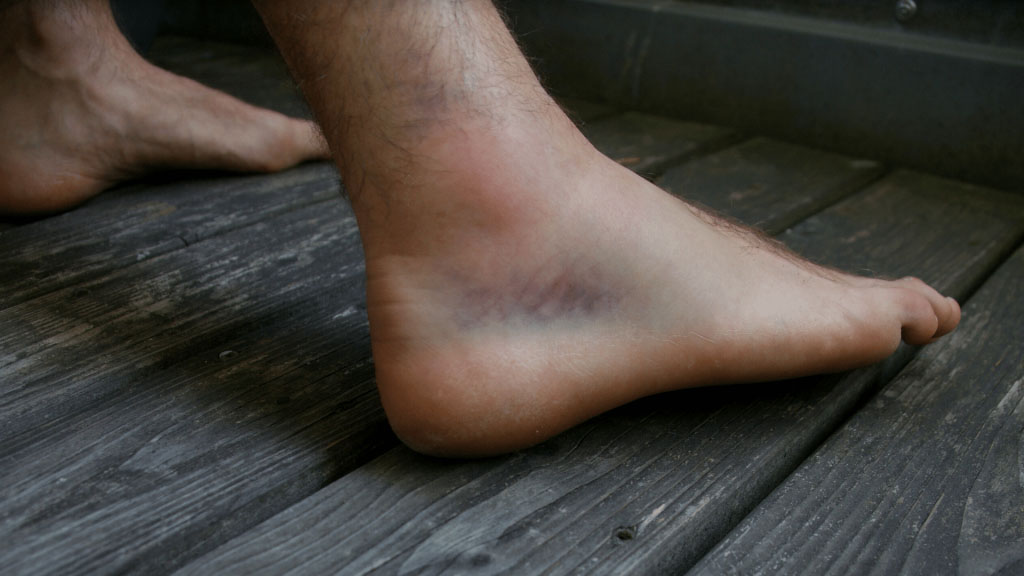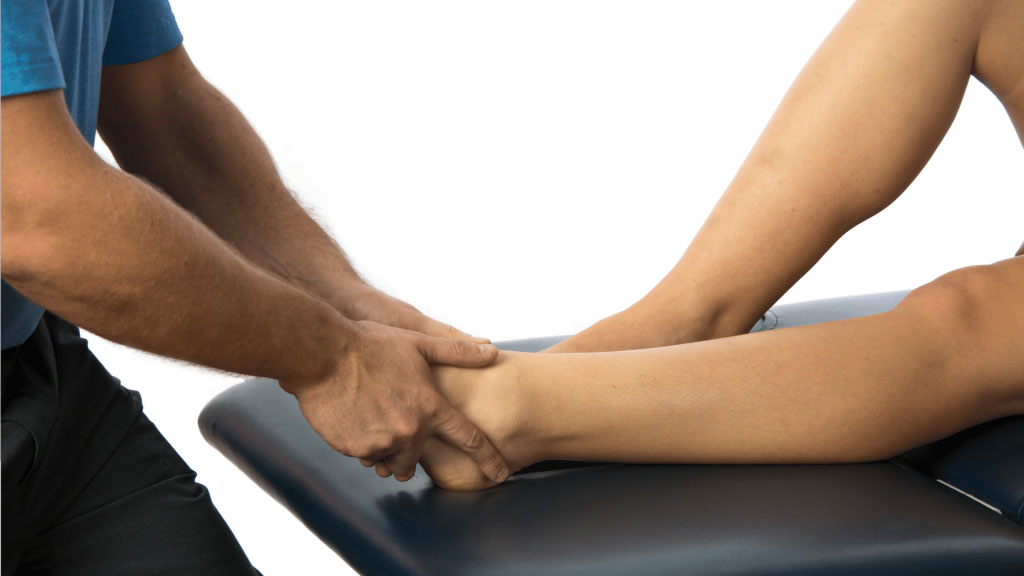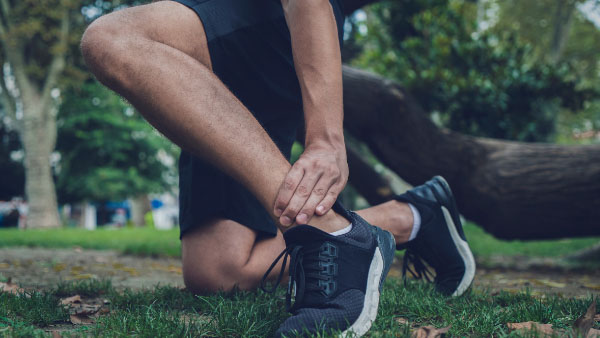Approximately 40% of all traumatic ankle injuries occur during sport. They are considered one of the most common sporting injuries, however interestingly, only 50% of those injured, seek medical attention (Vuuberg et al, 2018).
Ankle injuries have a high prevalence in indoor and court sports, and in sports that require cutting movements and changes of direction such as basketball, the varying codes of football, volleyball, and netball. Most of these injuries result in ligament tears, particularly in the lateral ligaments that account for 85% of ankle sprains (Ferran et al, 2006). Other ligamentous injuries of the ankle include the medial deltoid ligaments and those supporting the syndesmosis.
Unfortunately, many people do not get their ankle injuries appropriately treated. This lack of appropriate management can lead to instability, weakness, chronic pain, and ongoing problems. There are varying degrees of injury severity and complexity which require suitable physiotherapy assessment and rehabilitation.
Anatomy
The ankle is made up of three joints: talocrural, syndesmosis and subtalar joints with various ligaments providing stability. The talocrural joint is least stable in plantarflexion (toes pointed position) with the ATFL, CFL and PTFL providing stability. The deltoid ligaments are on the inside of the ankle spreading from the tibia to the talus, calcaneus, and navicular. The syndesmotic joint is stabilised by the AITFL, PITFL and interosseous ligament preventing gapping of the tibia and fibula.


How is the ankle injured?
Ligaments are predominantly torn following a traumatic injury such as rolling your ankle, falling over, being tackled or via a direct impact. This can happen in sport, at home, walking down the street or whilst working. The resultant injury is closely related to the mechanism of trauma with the force exceeding the capacity of the ligament resulting in a tear. A torn ligament can range from a small tear to a full rupture or even an avulsion fracture with associated pain, swelling and instability.
Lateral ligament injuries (the ones on the outside of your ankle) are commonly described as inversion injuries (foot going in) with the ATFL generally torn first followed by the CFL and PTFL dependant on force.
Medial deltoid ligaments (ones on the inside) are injured in positions of forced eversion (ankle rolling out) classically due to direct trauma to the outside of the foot or ankle.
The syndesmotic ligaments (ligament holding the 2 big bones of your lower leg together) are vulnerable when your foot is jammed backwards and rotated, forcibly separating the tibia and fibula leading to ligament tear.
How are Symptoms Described?
Most people will generally describe a mechanism of injury or traumatic event leading to their symptoms. They may experience a “pop” or snapping sound and find weightbearing tasks aggravating. They will likely have pain with ankle movements and may describe a sensation of instability. Ankle injuries are commonly accompanied by swelling and bruising which can potentially extend into the foot or lower calf.

Diagnosis and Examination
In most cases a likely diagnosis can be made based on a thorough physiotherapy consultation and examination. Determining the onset of symptoms and finding out the mechanism of injury will give important clues to the potentially injured structures, whilst an examination can indicate which ligaments are torn and the severity of damage.
The degree of disability, initial injury management and previous history of injury can all contribute to the diagnosis and prognosis.
Examination will include a variety of movements, tests and functional assessments dependant on the patient’s symptoms & history including:
- Gait Analysis
- Ankle ROM/movement testing
- Strength testing
- Palpation & swelling
- Ligament laxity & special tests
- Biomechanics & impacts of the kinetic chain
Following a complete examination, our physio’s can confidently diagnose and refer for appropriate imaging if appropriate. We may request an x-ray if a fracture is suspected in line with the Ottawa Ankle Rules, whilst syndesmosis injuries may need further imaging such as an MRI to determine severity.
The physio examination can also help rule out other injuries that may occur independently or in combination with ligament injuries.

Treatment and Rehabilitation
Most Ankle ligament injuries are best treated conservatively with Physiotherapy. Kolzer et al, (2012) favoured conservative management over surgery based on symptoms, function, cost, and time of recovery.
A systematic review by Doherty et al, (2016) showed that early mobilisation, exercise, and manual therapy techniques used by physiotherapists resulted in reduced pain and swelling, while significantly increased function. They also found that exercise therapy and neuromuscular retraining resulted in reduced incidence of chronic ankle instability.
Both medial and lateral ligament tears respond well to conservative physiotherapy management regardless of the severity, with surgery generally reserved for those with chronic ankle instability. A systematic review by Petersen et al, (2013) showed that Grade III ankle injuries warrant a 6 – 12 week period of conservative physiotherapy management. One study showed that 87% of patients who sustained a Grade III injury had excellent outcomes with conservative physiotherapy management compared with 60% of patients who were treated surgically.
The decision regarding management of syndesmosis injuries is based on the severity of the injury and the amount of instability on examination. If a syndesmotic injury is mismanaged it can lead to early arthritis and persistent pain (Bauer et al, 2009). Grade 2 & 3 syndesmosis tears will generally require surgical fixation and rehabilitation, so an early orthopaedic opinion is generally sought for these injuries.
Initial treatment for most ankle injuries involves reducing pain and swelling. This includes “hands on” manual therapy techniques used by the physio to assist with swelling and symptoms, and may include the provision of crutches, a CAM boot or ankle brace in higher grade tears. This can assist in reducing the load through the injured ankle whilst allowing early functional mobilisation.
As the initial symptoms start to improve it is important to progress towards active rehabilitation. The physio will prescribe a progressive exercise program to assist in addressing issues found on assessment. This will often include gait/walking retraining and muscle activation which is started once tolerated. Early mobilisation and weight bearing activity is shown to have positive outcomes (Kerkhoff et al, 2007).
Physiotherapy will also aim to restore all ankle movement and will assist with functional tasks such as walking, going up/down hills/stairs, running, and jumping. It is also important to increase strength and endurance in the muscles that support the ankle combined with balance and proprioception exercises related to the client’s goals.
By addressing a client’s strength and biomechanics our physios can safely assess, guide, and help individuals return to pre-injury sport and pre-injury life minimising the risk of recurrences and chronic issues.
Ankle ligament injuries can be both painful and debilitating but with appropriate rehabilitation, research suggests that ankle injuries recover well with physiotherapy treatment as the first line treatment. It is vital however, that initial physiotherapy management is commenced early (within 48-72 hours), not only so that a clear diagnosis is made and patients can be more comfortable as pain and swelling is managed, but also, so that ROM exercises and gait retraining can commence, overall giving a more favourable outcome and improved prognosis with people returning to life and sport sooner.
Have you injured your ankle?
GET AN ASSESSMENT & TREATMENT WITH OUR AMAZING TEAM OF PHYSIO’S.

- Get crystal clear about what you have done – Get an Accurate Diagnosis!
- Find out the most important steps for you to get pain free and back to life fast!
- Understand how to manage your activities without suffering the consequences of further injury
- Find out the simple yet essential exercises that can give you relief and speed up your recovery
- Leave the session with the confidence of knowing exactly what to do to get symptom free and get back to sport, activity and the things that you love.

